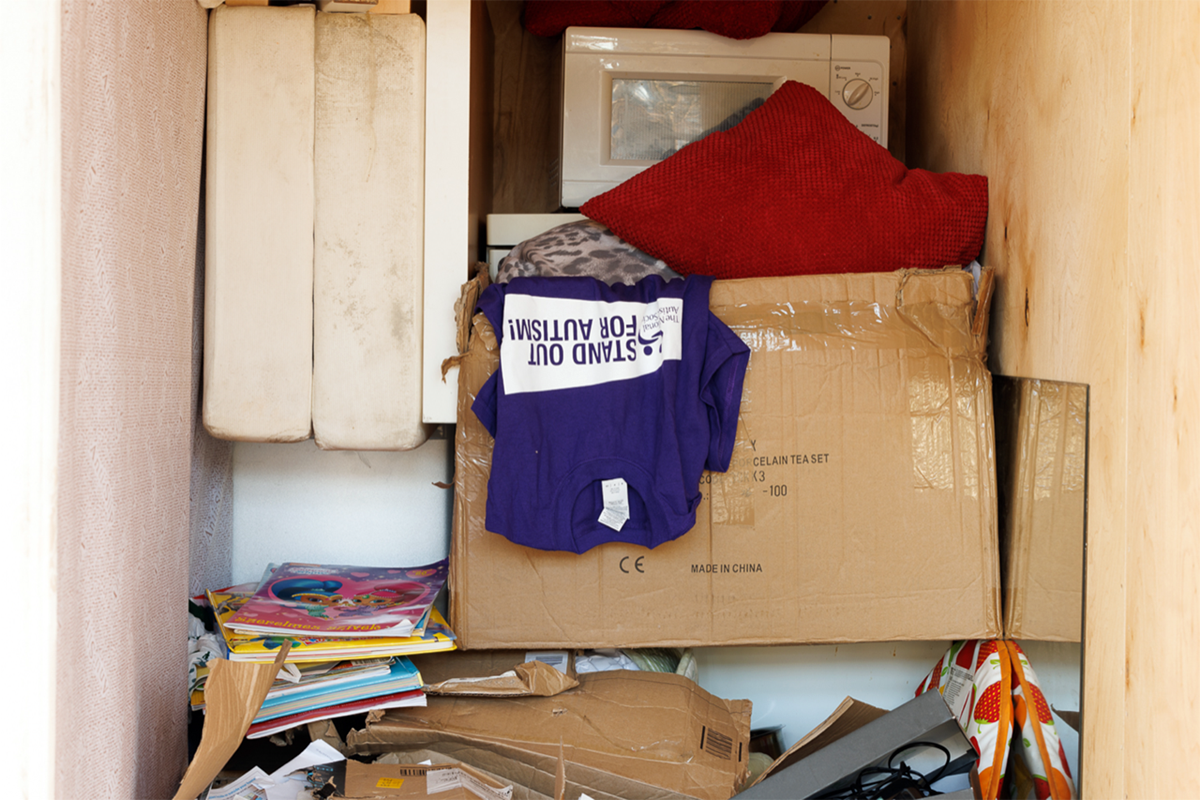Junk – exhibition review by Cadi Froehlich LG
“Today’s gift is tomorrow’s commodity. Yesterday’s commodity is tomorrow’s found art object. Today’s art object is tomorrow’s junk. And yesterday’s junk is tomorrow’s heirloom”

The Brighton CCA is the recently renamed gallery at Brighton Uni. The traffic on a sunny day crawls past it, and the chaotic sounds of the city and all its activity come in waves through the huge windows, in contrast with the still work inside.
The first space is darkened, with 3 clunking slide projectors along one wall providing the light source. The slides they show, noisily and out of sync, are all black and white images of ad-hoc adverts, notices and general calls for our attention – lost dogs, special offers, jobs vacant. Hand-written, or snapshots of flyers, these present a bewildering confusion of demands, and are impossible to keep up with. The sense of life thronging unregulated and unfiltered all around is palpable, even as I stand in a contemporary art gallery with printed handouts and the official stamp of an education facility. The rest of the world is out there, getting on with it.
Stepping through to the second space is a relief, despite the aforementioned traffic metres away through the wall of glass. At first glance, we are presented with five large wooden shipping crates, sat in regular intervals across the space. Walking around them we see that they are open on one side, exposing the contents.
We know that Lloyd Corporation is an artist duo based in Athens and London. Either they both live between both cities, or they collaborate closely from afar. Either way, the contrasts in daily life experiences, and the adjustments needed if travel is involved, are easily overlayed onto the large crates and their contents.
The sense of a household packed up for transport is palpable. The containers could be grouped by room – main house, bedroom, workshop, or by owner – the health-enthusiast, the computer repair person, the fanatical clothing collector, the international importer of bits and bobs – it’s hard to tell where my assumptions are leading my interpretation. This ambiguity keeps me looking. It’s a cross between the nosy voyeur, and the visitor to an art gallery, looking for meaning.
Yet we know these objects have all been curated by the artists with deliberate and careful intent. We are told they have been sourced from second-hand shops, junk shops and online sites. So they have therefore been presented with deliberate aesthetics. Suddenly this changes how I look at the open-ended containers. They blur, and become abstract compositions of line, texture and colour – they become almost 2D presentations of these ideas. The consideration given to the arrangements of the contents suddenly meant they could almost be anything, anyone’s, which of course is the case.
The reference reading offered at the exit is the ideal final clue. Writings by Miller on Stuff, Jenks and Silver on Adhocism, and a catalogue of Christo’s 1960’s studio works inform the thinking of the artists, the sense that these material collections of parts is fleeting, but the whole they make up is a suggestion of the potential for us to activate the work.
In offering us the opportunity to see this collection of familiar paraphernalia in this variety of ways, I think the artists have successfully enabled the junk to become a possible heirloom.
Cadi Froehlich LG, 2022
www.cadifroehlich.com
“Today’s gift is tomorrow’s commodity. Yesterday’s commodity is tomorrow’s found art object. Today’s art object is tomorrow’s junk. And yesterday’s junk is tomorrow’s heirloom”
Lloyd Corporation at Brighton CCA
29 Jan — 16 Apr 2022, 12 – 5 pm
